Steemit Crypto Academy /Beginners' Level/ Season 4 Week 7/ Home Work Task for Professor @awesononso- Proof of Keys.
Introduction.
It is a great privilege to join the academy again this week and the series of knowledge gained from this academy is second to none. A big thank you to the steemit team for the amazing initiative and to the wonderful professors for the knowledge passed from every lecture provided.

Question 1- Explain private and public keys in relation to custodial and non-custodial wallets.
Financial transactions are usually secured in a specific way for different account holders, while normal financial systems like a bank make use of passwords, decentralized systems make use of public and private keys.
These keys contain unique words that can only be decoded by the recipient. For cryptocurrency, these keys could either be a private or a public one. Public keys are keys that give users restricted access to a particular profile, anyone who has the access to a public key could simply access that account but of course to a limited extent. A public key does not provide a user with access to funds or assets in an account.
Private keys, on the other hand, provide holders with complete access to the assets in the account in question, this means a private key needs to be kept completely safe since anyone who has access to these keys has complete access to the assets in the account. A centralized banking system also gives users a special pin that is unique to each user to perform transactions.
A custodial wallet is a third-party wallet where user funds could be kept until they are required by the user involved. A custodial wallet usually has access to the user's private keys therefore access to the user's funds without the user's consent. A good example is the normal banking system that we have, we trust the bank to keep our funds safe so we keep those funds there until we need them. The bank, on the other hand, has total access to our saved funds without seeking our permission, and of course, they will still leave us with some fake account balance when in reality our funds are already out on some mission.
There are some cryptocurrency exchange platforms that operate as a centralized system, they are known as centralized exchange platforms. Despite the fact that users have the right to own a private key, the right to those keys is shared between the account holders and the platform itself.
Non-Custodial wallets do not require any third party, users, in this case, they have total control to their private keys and of course to their funds as well, there is no third party involved in this case, so as long as a user's private keys are kept safe, the funds are safe as well. In a system like this, funds cannot be taken out of the user's account except the user authorizes it.
Question 2- What do you think about the Proof of Keys Day? What precautions would you take when participating?
Proof of keys is simply an event where investors take out funds from a centralized platform with the intention to guarantee if the platform has as many funds as they claim to have. This event occurs on the 3rd of January every year to celebrate and mark the decentralized nature of Bitcoin, this date is a memorable one because it is the first time Bitcoin was ever mined and it was the beginning of the prove that users can have complete access to their funds without any third party restriction.
I really think the idea of ''proof of keys day'' is a good one, exchanges should be accountable for the number of assets they have displayed for users and a day like this will surely expose the lies behind the displayed funds on their exchange (if there is any). When users are able to withdraw all their funds successfully to another exchange of their choice, it is guaranteed to prove that such exchange can be trusted to a reasonable extent, and users are guaranteed that they can always access their funds whenever there is a need for that.
There are precautions that must be taken when participating in the ''proof of keys day'' and some of them are:
Carefully analyze the receiving wallet: At any point during the process of transferring funds, we must carefully validate if the receiving wallet address is authentic in order to avoid sending funds to a scam project and in the process losing all the funds.
During the process of transferring funds, private keys need to be kept properly. We must remember that anyone who has access to our private keys has complete access to our funds so it needs to be handled with complete care.
During the transfer process as well, users must be careful to correctly input wallet addresses as the wrong wallet address will mean loss of funds.
Question 3- Do you prefer Centralized exchanges or Decentralized wallets for storing your cryptocurrencies? Why?
I definitely prefer to store my cryptocurrency in a decentralized wallet for these reasons:
It is a better store of value than a centralized exchange: Decentralized wallets provide users with the complete ownership of their funds with the initiation of a private key. A decentralized system has no access to a user's fund like a centraized exchange does. This makes it possible for decentralized exchange users to have access to their funds at any time.
Centralized exchanges are more prone to attacks than decentralized exchanges: Centralized exchanges usually have more access to large investor funds and this makes them a good game point for hackers.
Users can operate anonymously: A decentralized exchange is not governed by a central authority so it does not require users to go through a compulsory verification known as KYC, users can operate very conveniently without giving out their details to a third party. A centralized system, on the other hand, will definitely require users to give in their personal information in order to complete a meaningful transaction.
A decentralized system is known to carry out a faster and more efficient form of transaction.
From the points listed out above, you will agree with me that it is safer and better to have our assets stored on a decentralized wallet than on a centralized exchange.
Question 4 - Let us assume it is Proof of Keys Day:
(a). Transfer at least 20 Steem from your Binance wallet to your Steemit wallet.
(b). Transfer at least 50 TRX from your Binance wallet to your TronLink wallet.
(Provide Screenshots and make sure you have your Keys).
To perform the transfer of STEEM from Binance wallet to Steem wallet, the first thing to do is copy my STEEM ID. As you can see, I do not have any steem in my wallet.
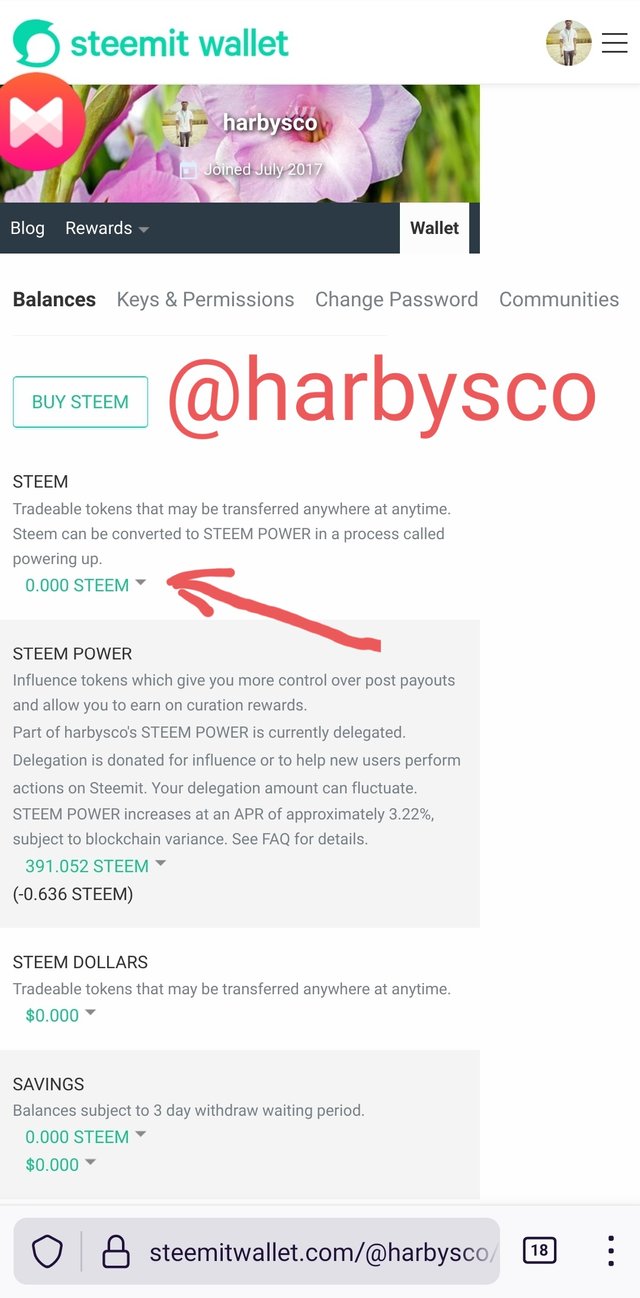
After copying the STEEM ID, the next step is to go to Binance and send the STEEM.
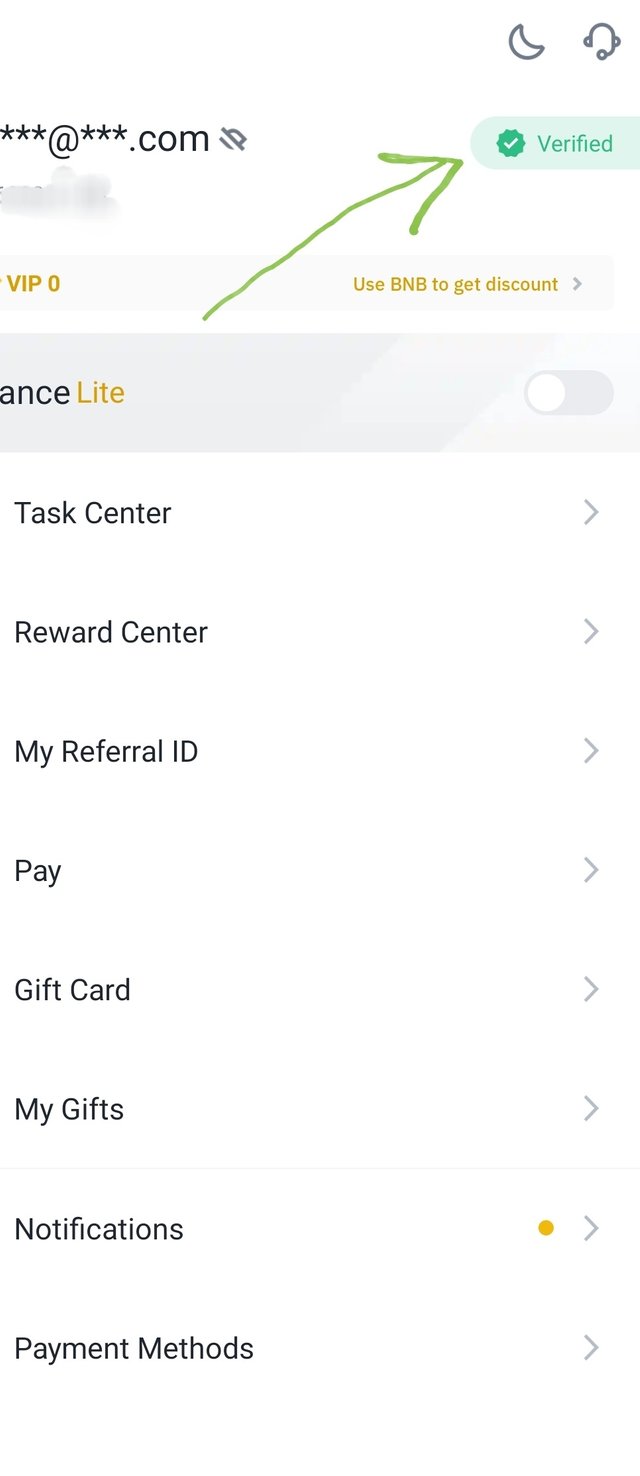
To do this, I will click on STEEM then withdraw.
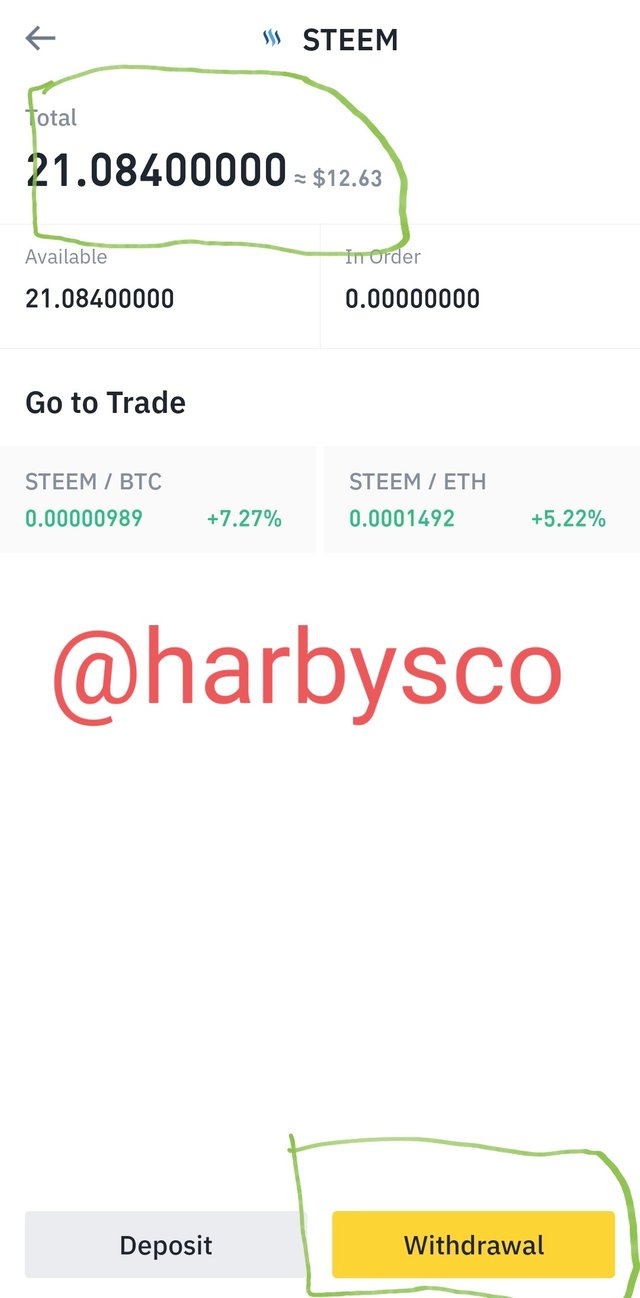
After clicking om withdrawal, insert the amount of STEEM to withdraw.
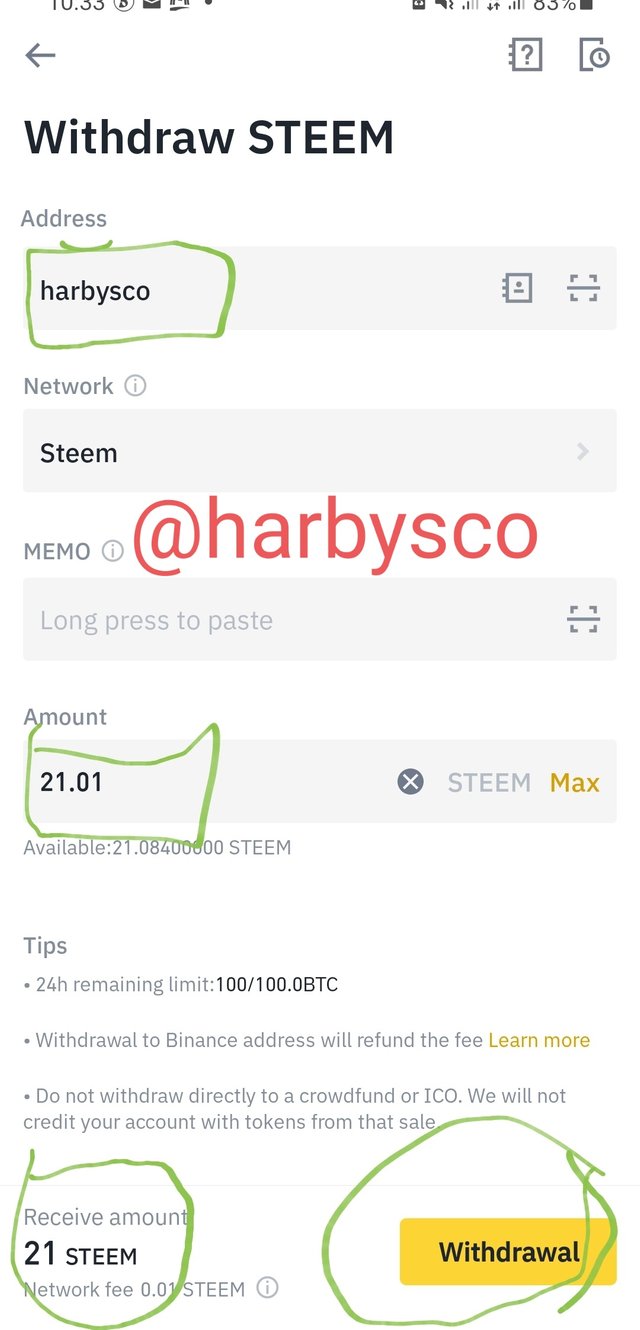
A pop-up appears since I didn't add a memo, confirming if I could continue, Click on submit.
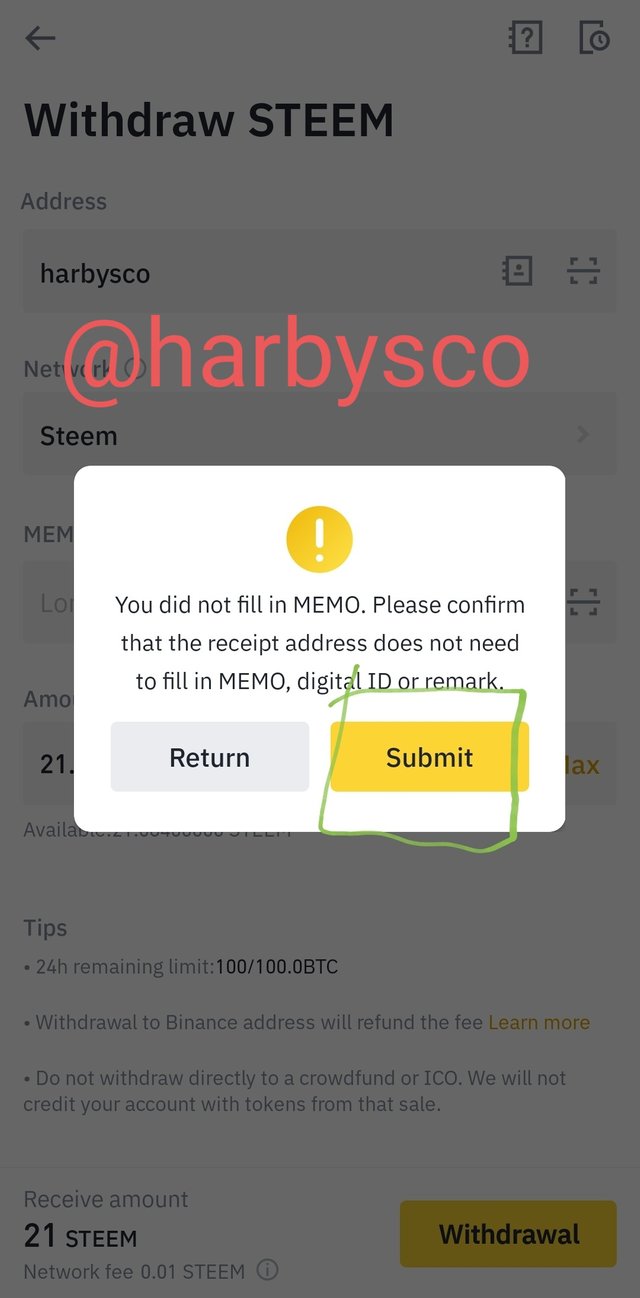
Then click on confirm.
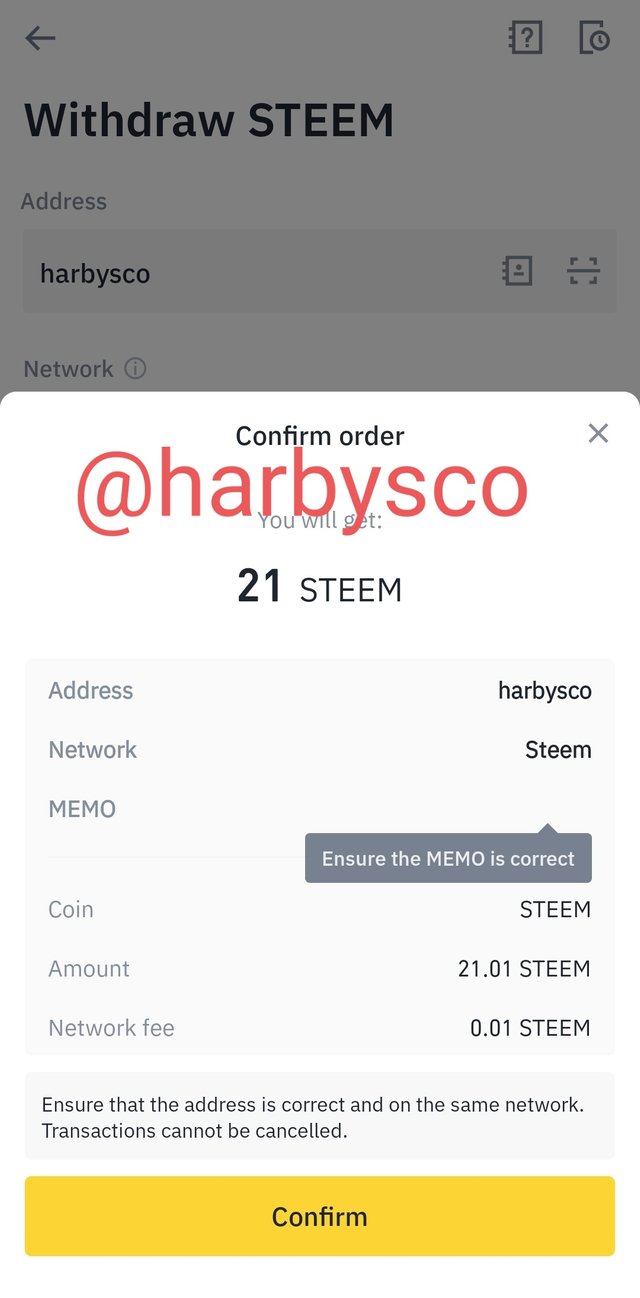
After clicking on confirm, the withdrawal verification page appears where OTPs are sent to Email, phone number, and offline OTP. After inserting the codes, then the withdrawal is completed.
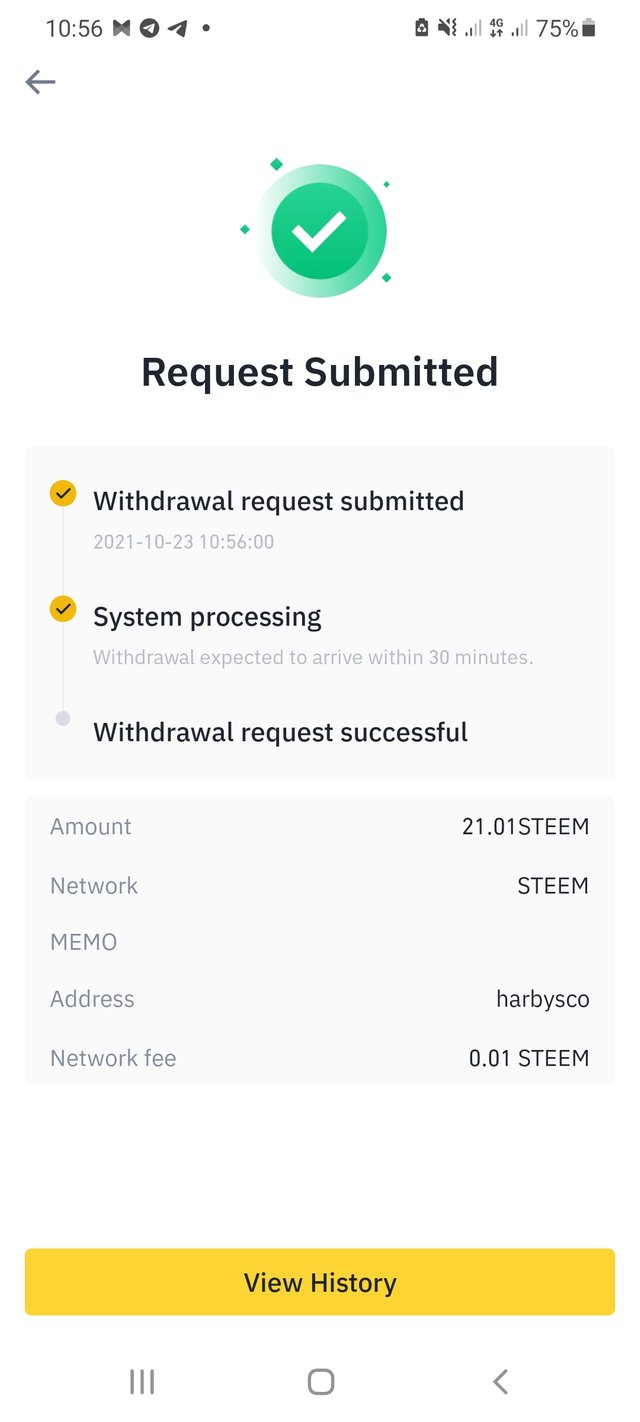
The Withdrawal appears in my STEEM wallet.
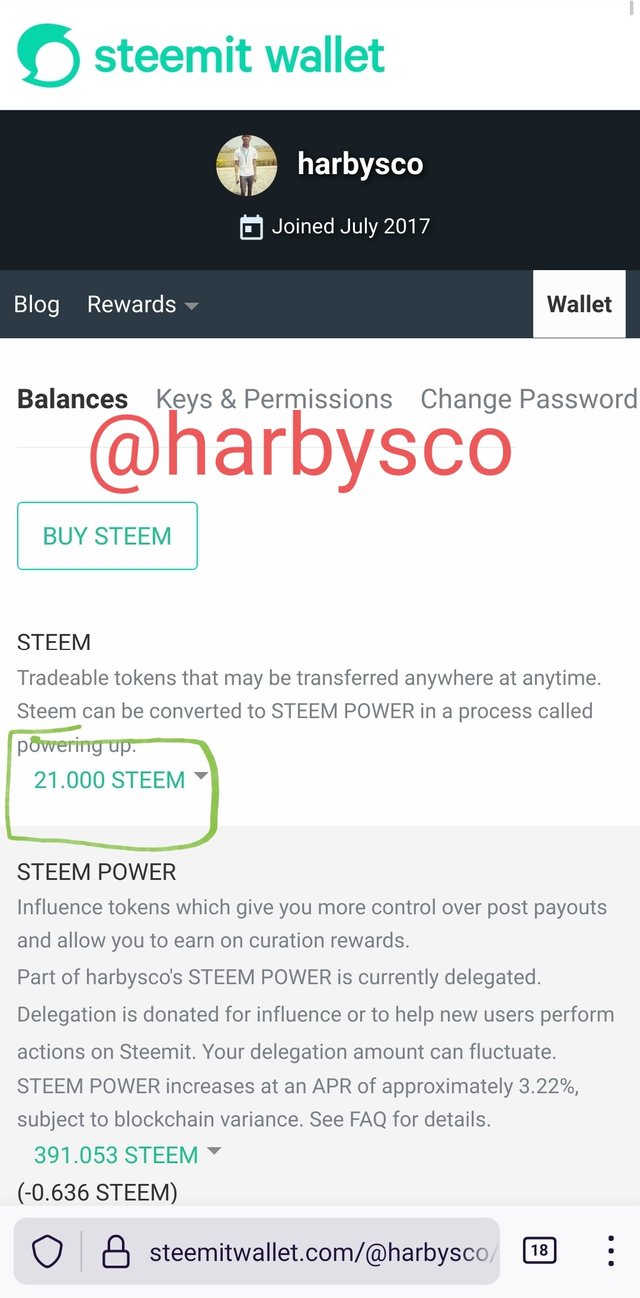
Transfer of TRX from Binance exchange to TRON LINK wallet.
Copy the public Address key to paste on the Binance wallet.
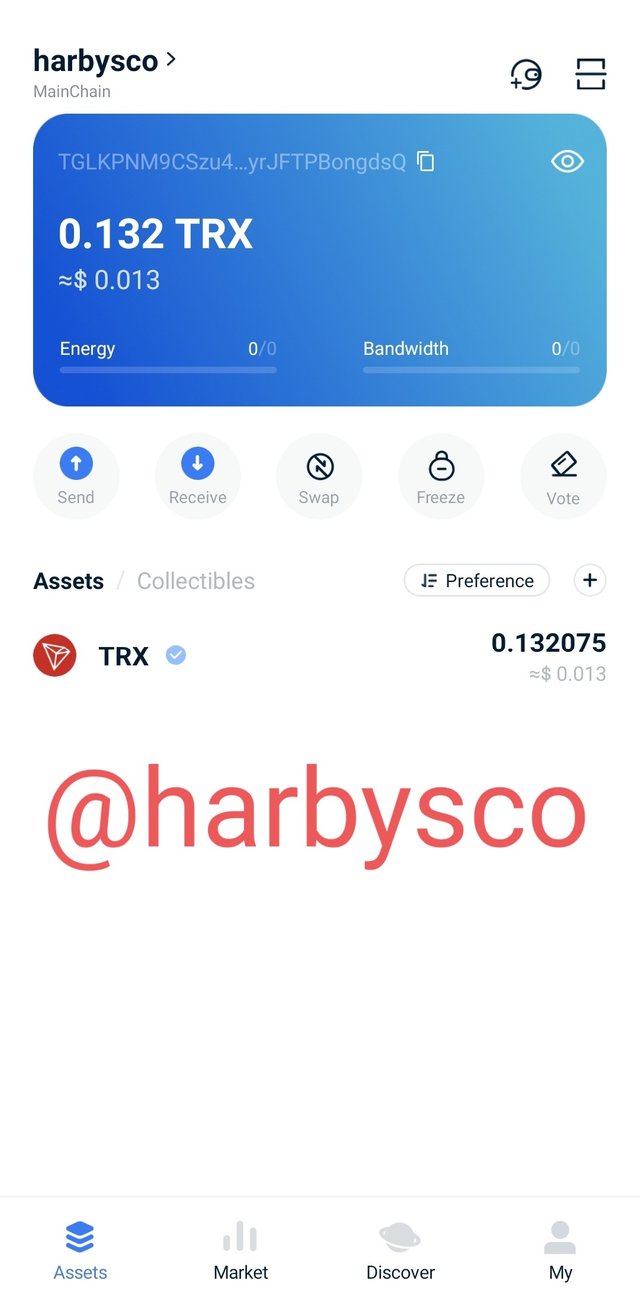
Go to Binance exchange and click on TRX.
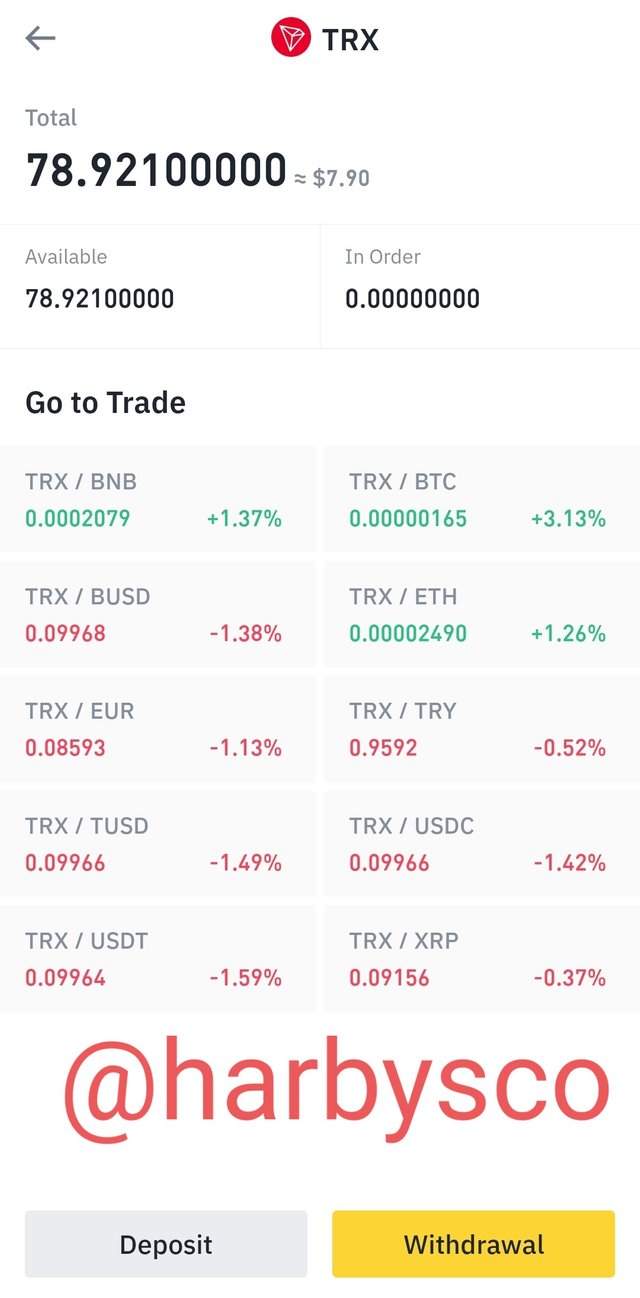
Click on Withdrawal, add the wallet address a d click on withdrawal.
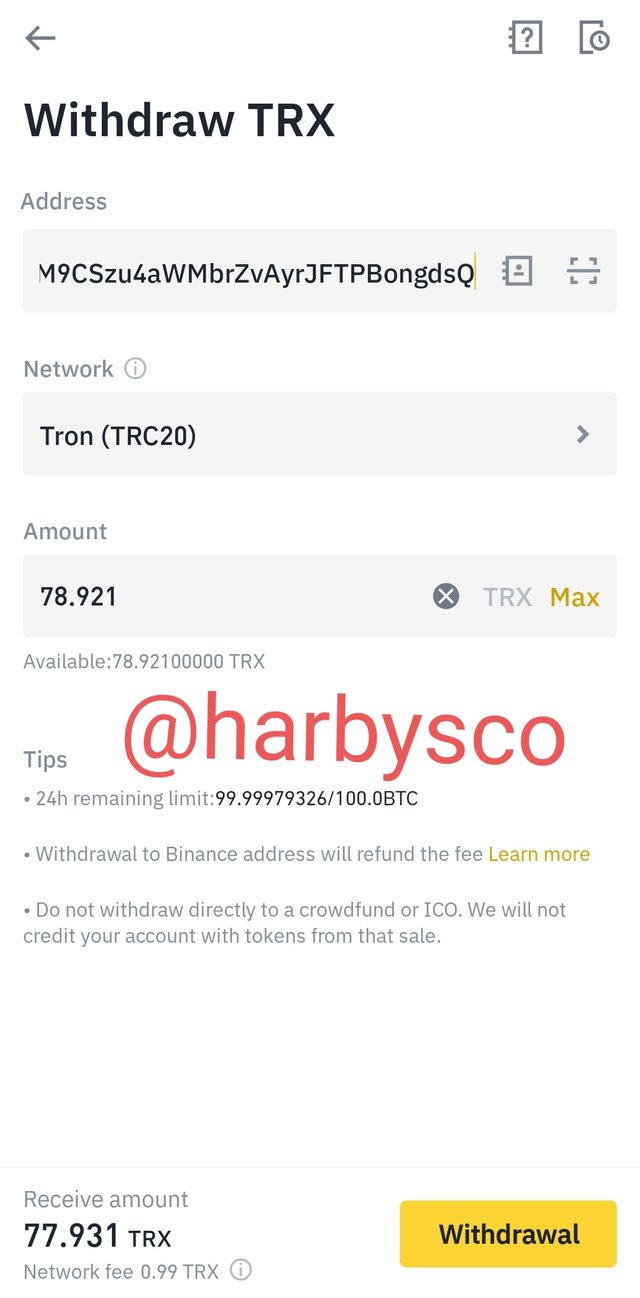
Click on Confirm, input the necessary OTPs and click on proceed.
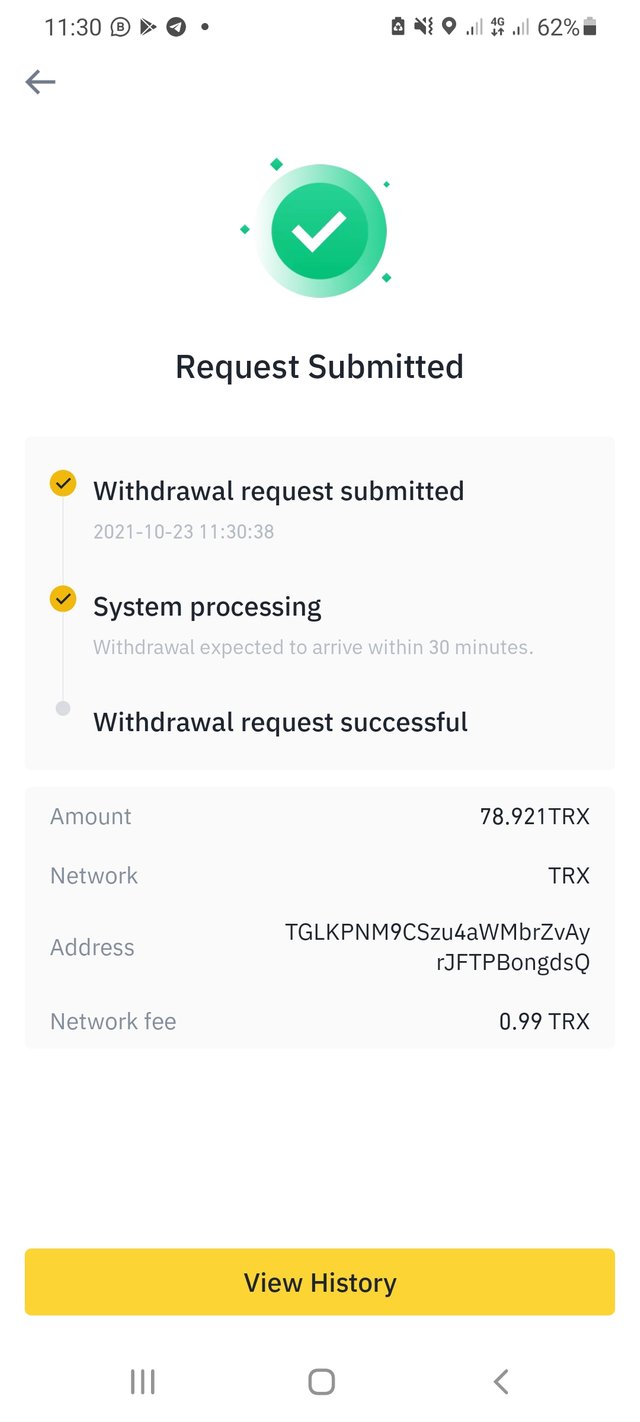
TRX appears in Wallet
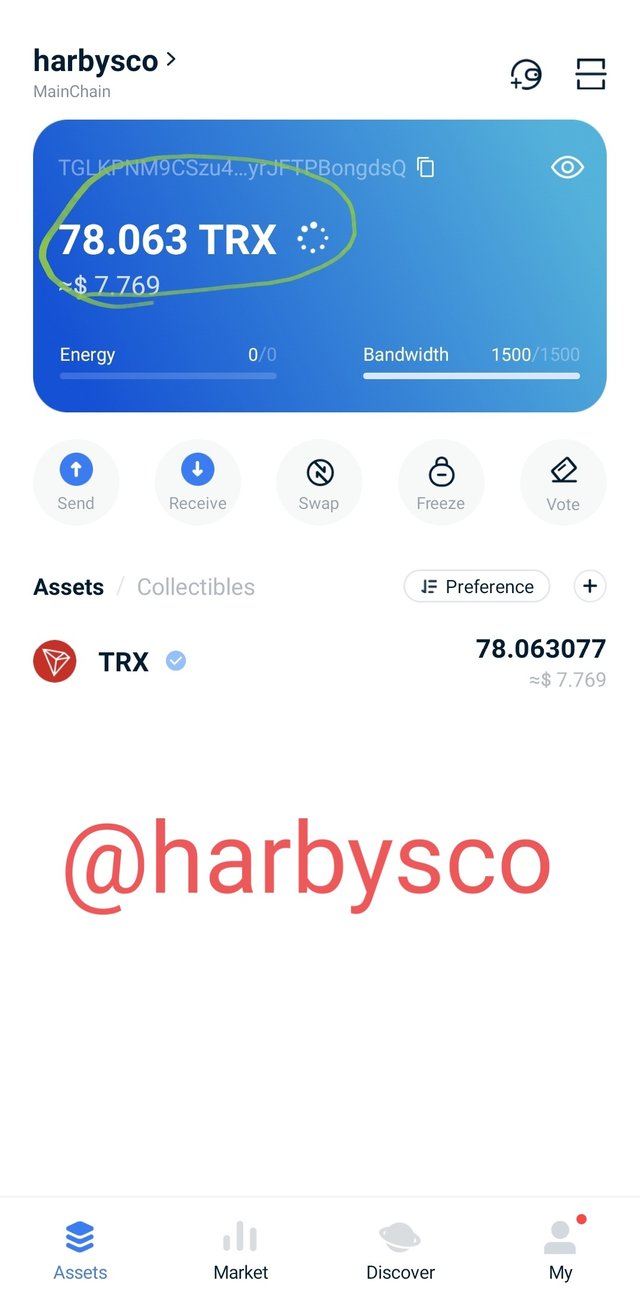
Question 5- In one statement, what is the major significance of the transfers in question 4.
The transaction carried out in question 4 is actually a good way to test for effective management of our crypto assets. This transaction is likewise a test that the access to our private keys will make it possible for us to initiate transactions and of course the need to become more cautious with the way we handle our keys especially the private keys.
Our ability to properly guard our private keys will make it extremely difficult for scammers to access our funds and we remain the only person who can initiate transactions on the account.
Conclusion.
This is indeed an interesting and educating topic and I am really glad that I did not miss out on such an opportunity to learn. Private keys remain a significant asset while we operate on the blockchain and they must be guarded with extreme care. Thanks to steemit team and to professor @awesononso, have a wonderful week ahead.
You've got a free upvote from witness fuli.
Peace & Love!